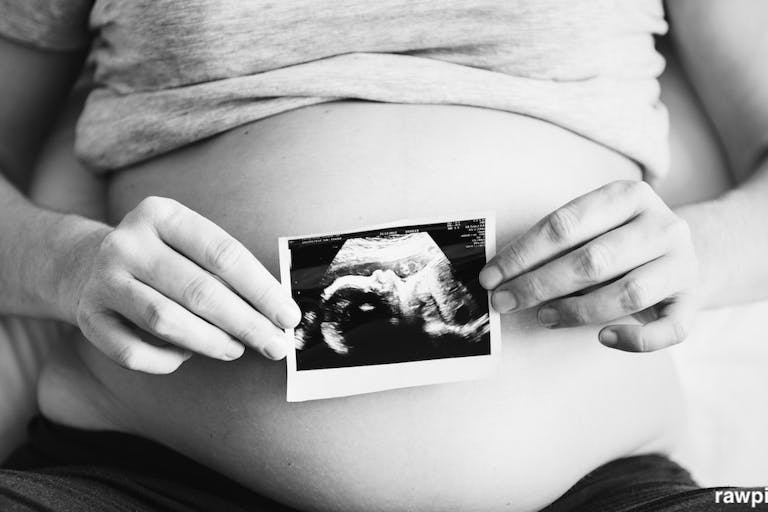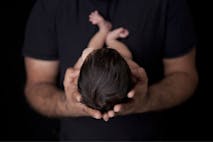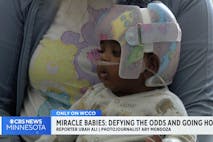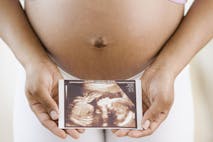
New Archbishop of Canterbury warns of danger in legalizing assisted suicide
Nancy Flanders
·
Pro-lifers should hold their applause for uterus transplants due to major ethical concerns
Earlier this month, the Cleveland Clinic announced it had delivered a baby born to a mother with a uterus transplanted from a dead donor, marking the first such birth in the U.S. While the news of a healthy birth is always a cause for joy, the broader implications of the medical procedure are fraught with moral and physical perils.
Women seeking uterus transplants most often suffer from a condition called Mayer-Rokitansky-Küster-Hauser (MRKH) syndrome, which affects 1 in 4500 women. Women with MRKH syndrome, despite often having functioning ovaries, are born either with underdeveloped or entirely absent uteruses. The first baby delivered to a uterus transplant, a major surgery requiring more than 10 hours of surgery and up to a year of healing, occurred in Sweden in 2014. Since then, approximately a dozen babies have been born to mothers who had uterus transplants. In 2018, a hospital in São Paulo, Brazil became the first to deliver a baby from uterus transplanted from a dead donor. The most recent Cleveland Clinic case occurred in June of 2019 during an ongoing trial conducted at the facility.
READ: ‘Social surrogacy’ on the rise in U.S. for reasons of convenience
Uterus transplants always require IVF
Due to the fact that the implanted uterus is not connected to the fallopian tubes, women with uterus transplants cannot conceive children through natural means. The only option for women to become pregnant with a transplanted uterus is by using in-vitro fertilization (IVF), a $5.8 billion industry replete with the devaluation human life, the commodification of babies in their most vulnerable condition as embryos, and the use of eugenics and selective abortion.
IVF is a highly problematic procedure in which multiple babies are conceived outside the womb and then screened for any “undesirable” traits or conditions. Those with conditions such as Down syndrome are destroyed. As a USCCB article put it, “In IVF, children are engendered through a technical process, subjected to ‘quality control,’ and eliminated if found ‘defective.’” Several of the “preferred” babies are then introduced one by one (frequently several at a time) until at least one is implanted in the womb. The rest are frozen indefinitely, a process in which some die immediately or can even be left for decades in limbo. (Learn more about embryo adoption here.)
After pregnancy begins, if multiple children are successfully implanted, doctors will often label the pregnancy “high risk” and often recommend the euphemistically-termed “selective reduction,” or a cruel form of abortion in which the doctor uses a needle to inject a fatal chemical directly into the heart of one of the babies, with the killing usually viewed live on ultrasound.
Risks to mother and child associated with uterus transplants
Aside from reliance on IVF, uterus transplants are controversial due to possible major risks to mother and child. Dr. Robyn Horsager-Boehrer, M.D., of Chief of OBGYN at a University of Texas Southwestern Medical Center, notes that the anti-rejection drugs women are required to take can cause “low birth weight, premature birth, and increased risk of birth defects.” In one Swedish uterine transplant, organ rejection began at around 18 weeks of pregnancy, and although an increase in drugs prevented rejection, the baby was born premature at 31 weeks as a result of the mother developing pre-eclampsia. Risks to the mother include “blood loss requiring transfusion, infection, organ rejection, and the potential for adverse reaction to anti-rejection medications,” according to Dr. Horsager-Boehrer. And uterus transplants are only functional for a maximum of two deliveries, after which they must be surgically removed.
Although the sample size is small, Dr. Horsager-Boehrer believes that the procedure is not ethically justified: “For an elective procedure meant to result in pregnancy, the risks outweigh the potential benefits.” As Professor Sharona Pearl of the University of Pennsylvania points out that, unlike other fertility treatments whose end goal is a baby, “the end goal of the uterus transplant is a pregnancy,” such that “carrying a child becomes a need whose fulfillment justifies tremendous risk, possibly to multiple people.”

Hidden agendas and social implications of uterus transplant research
Adding to the physical risks are the troubling social and economic incentives inherent to this kind of procedure. As with the phenomenon of commercial surrogacy, which even pro-abortion feminist Gloria Steinem acknowledges is a problem, uterus transplants could eventually result in the commodification of uteruses, exploitation of women, and the cheapening of human life.
Also worrying are hidden agendas that seem to prevail among some who advocate for uterus transplants. Dr. Richard Paulson, former President of the American Society for Reproductive Medicine, argues that, with current technology, uterus transplant technology can already enable those born with male anatomy to give birth. “There would be additional challenges, but I don’t see any obvious problem that would preclude it. I personally suspect there are going to be trans women who are going to want to have a uterus and will likely get the transplant,” said Dr. Paulson according to The Telegraph. And Philip Ball writing in The Guardian observes that “making pregnancy potentially available to trans women and even to cis men (with hormone treatments), uterus transplants could challenge social norms and preconceptions, just as IVF has done by creating new family structures.”
A way forward?
Pro-lifers should remain clear-eyed about the state of uterus transplant technology, its moral pitfalls, the hidden agendas, and social implications today. At the same time, pro-lifers could theoretically envision a scenario where advancements ameliorate many of these concerns and could present an ethical solution to conditions like MRKH syndrome. As Catholic bioethicist Fr. Tad Pacholczyk proposes, “If a uterus were transplanted from either a deceased or a freely-consenting, postmenopausal woman to another woman whose ovaries, fallopian tubes and other reproductive tissues were then able to function so she could conceive a child within the marital embrace, rather than through IVF (and assuming minimal medical risks to both donor and recipient), the womb transplant could represent an ethical means of resolving her uterine-factor infertility.”
“Like” Live Action News on Facebook for more pro-life news and commentary!
Live Action News is pro-life news and commentary from a pro-life perspective.
Contact editor@liveaction.org for questions, corrections, or if you are seeking permission to reprint any Live Action News content.
Guest Articles: To submit a guest article to Live Action News, email editor@liveaction.org with an attached Word document of 800-1000 words. Please also attach any photos relevant to your submission if applicable. If your submission is accepted for publication, you will be notified within three weeks. Guest articles are not compensated (see our Open License Agreement). Thank you for your interest in Live Action News!

Nancy Flanders
·
Analysis
Cassy Cooke
·
Analysis
Nancy Flanders
·
Newsbreak
Angeline Tan
·
Human Interest
Nancy Flanders
·
Issues
Nancy Flanders
·
Human Interest
Laura Nicole
·
Human Interest
Laura Nicole
·
Newsbreak
Laura Nicole
·
Human Interest
Laura Nicole
·
Human Interest
Laura Nicole
·